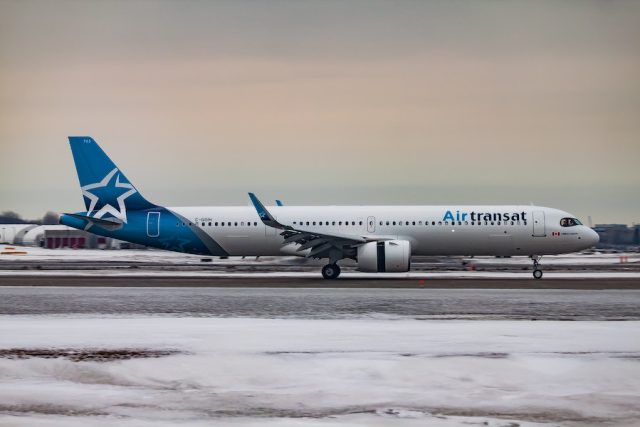Aircraft landing gear is an essential part of the overall function of an aircraft itself. This complex system of mechanics is used not only for landing but also bearing the weight of the aircraft during take-off and taxiing.
There are many elements to the aircraft landing process and the entire logistics of operating an aircraft, but you don’t need to be an aerospace engineer to learn about and understand the landing gear. This article serves as a quick overview of the literal nuts and bolts involved in the makeup of the landing gear of an aircraft.
What Are The Different Types of Landing Gear?
From the dawn of aircraft with Lewis and Clark to ultra-modern fighter jets today, all aircraft have their own unique landing gear, but there are four types of landing gear used in a wide variety of aircraft.
Tail-Wheel Landing Gear
The first type of landing gear is called the tail-wheel and this category of landing gear is what will see when you look at some of the first airplanes. The apparatus is made up of three Aerospace Rotables in total. Two large wheels at the front, beneath the fuselage, and one, smaller wheel underneath the tail.
Not many airplanes nowadays have this type of landing great unless you go out into the country where there are a lot of airplanes used for dusting crops.
Pontoons Landing Gear
The second type is called pontoons. Now, don’t get confused with pontoon boats, although you are not far off. The pontoon landing gear is used for planes that are designed to land on water. These types of airplanes are a hybrid of an airplane and a boat and can land on both land and sea.
The two pontoons on either side of the aircraft are large, hollow tanks that serve as buoys once the plane hits the water. Many Pontoon airplanes have retractable landing wheels as well, allowing them to land on the ground if needed.
Skiis Landing Gear
This third type of landing gear is for aircraft that land in snow. You will see this kind of landing gear on aircraft on missions to the Arctic or Antarctic or rescue planes that work in the mountains.
Tricycle Landing Gear
The fourth type of landing gear is called the tricycle gear. This is the most common type of landing gear and can be seen in all commercial airliners and other airplanes used for the transportation of passengers. This style of landing gear is just how it sounds and is an evolution of the first type we looked at: the tail wheel.
Aircraft with this style nowadays keep the basic triangle shape with two sections of wheels below the fuselage and one section in the back. The only changes that have happened are that larger crafts use more wheels depending on how many they need to support their size.
Fixed vs. Retractable Landing Gear
Within the categories of landing gear, two styles of landing gear can be used: fixed landing gear and retractable landing gear
Fixed landing gear can be found on older aircraft like those that used the tail wheel style, but it is not as common as retractable landing gear.
Retractable landing gear is gear-like wheels, that can be retracted into the craft once it is airborne. This reduces drag and prevents wear and tear on the equipment, which means less money is spent on replacements.
From Front to Back
The landing gear of an aircraft is not consolidated into a single area of the craft, so we will walk through the most important pieces of equipment from the nose to the tail. This is a good guide to keep handy if you are interested in a career in aerospace engineering one day. As the landing gear is classified as one of the critical subsystems of any aircraft, it is important to know how each bit works.
In the Nose
When you first glance at the nose of an airplane, you may not think it has anything to do with the process of landing an airplane, but that is not true. Embedded in the nose of all modern aircraft is a camera that aids the pilot when landing and taking off.
Certain aircraft also have retractable wheels that drop down from the nose and retract toward the rear. These extra wheels are used for added stability when landing.
In The Cockpit
The cockpit has all of the switches that command all of the landing gear and, of course, the steering system.
Different models of aircraft have different steering systems, but the one most commonly used today in commercial aircraft is differential braking. Pilots are able to steer by switching on and off between braking the left wheels and the right wheels of the aircraft.
Middle Section
The middle section, or the area below the fuselage, is where we find the mirrored wheels of the tricycle design that we talked about below. On larger aircraft, this section of the airplane could have up to 20 steerable wheels, 10 on either side.
The brakes are also located in this section of the aircraft and can be applied by the pilot in the cockpit above.
In The Tail
In some aircraft, the tail will have a wheel that is sometimes called a skid. This nickname came from the fact that when the aircraft lands, the tail wheel skids on the ground, helping slow down the aircraft as it hits the ground.
How Does It All Work?
To sum everything up, depending on the aircraft you are looking at, the landing gear could be different, but generally, every aircraft will have wheels, brakes, and steering to help it land. Wheels are almost always located in the middle section of the aircraft below the fuselage and are either fixed or retractable.
The wheels are what the aircraft lands on when it hits the earth and they aid in navigating the aircraft on the tarmac as well. When landing occurs, the brakes are used to slow down the aircraft as well as steer it into place.
Aircraft landing gear is complicated and ever-changing, but the basics of landing an airplane can be learned by first understanding this essential system. Use this article as a guide as you enter the world of aerospace engineering.














